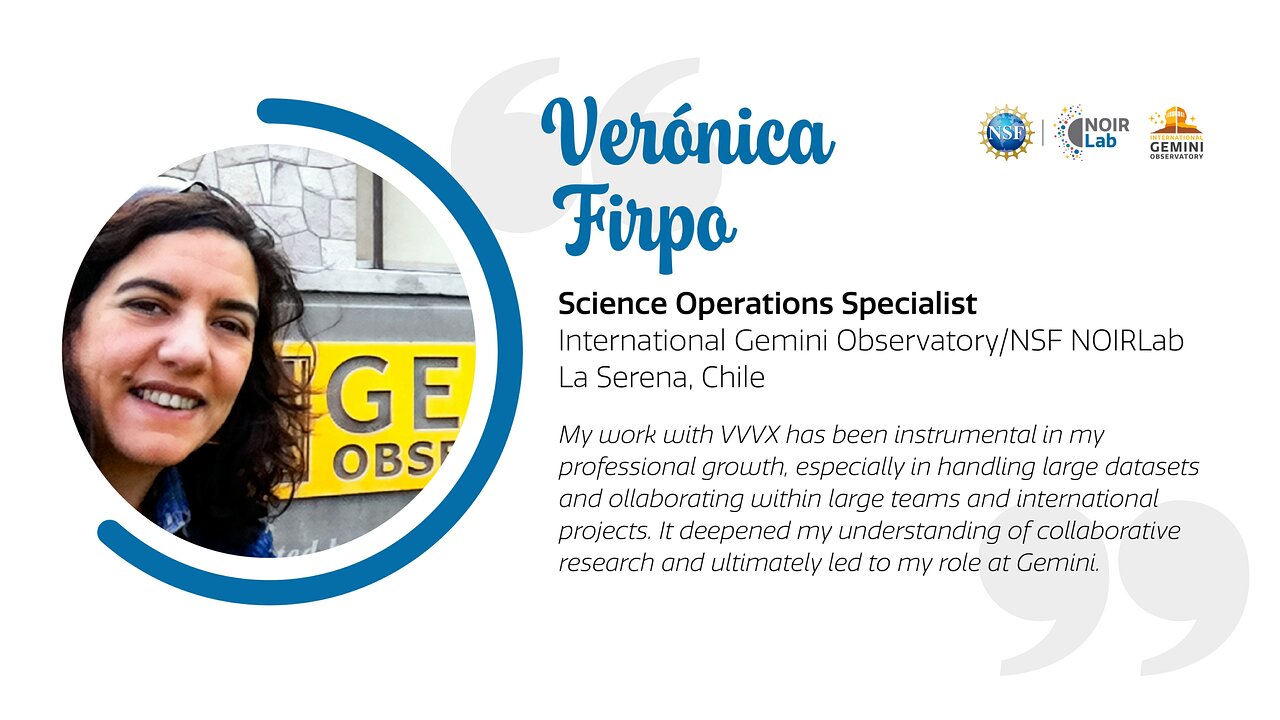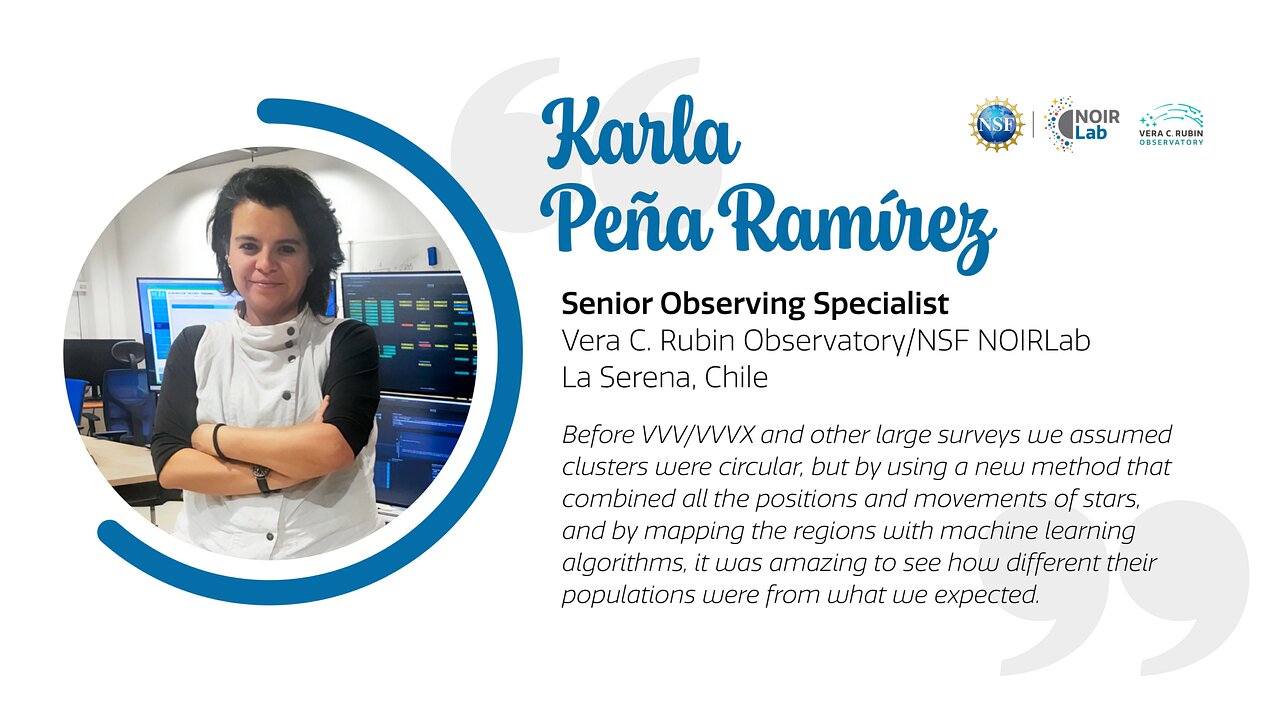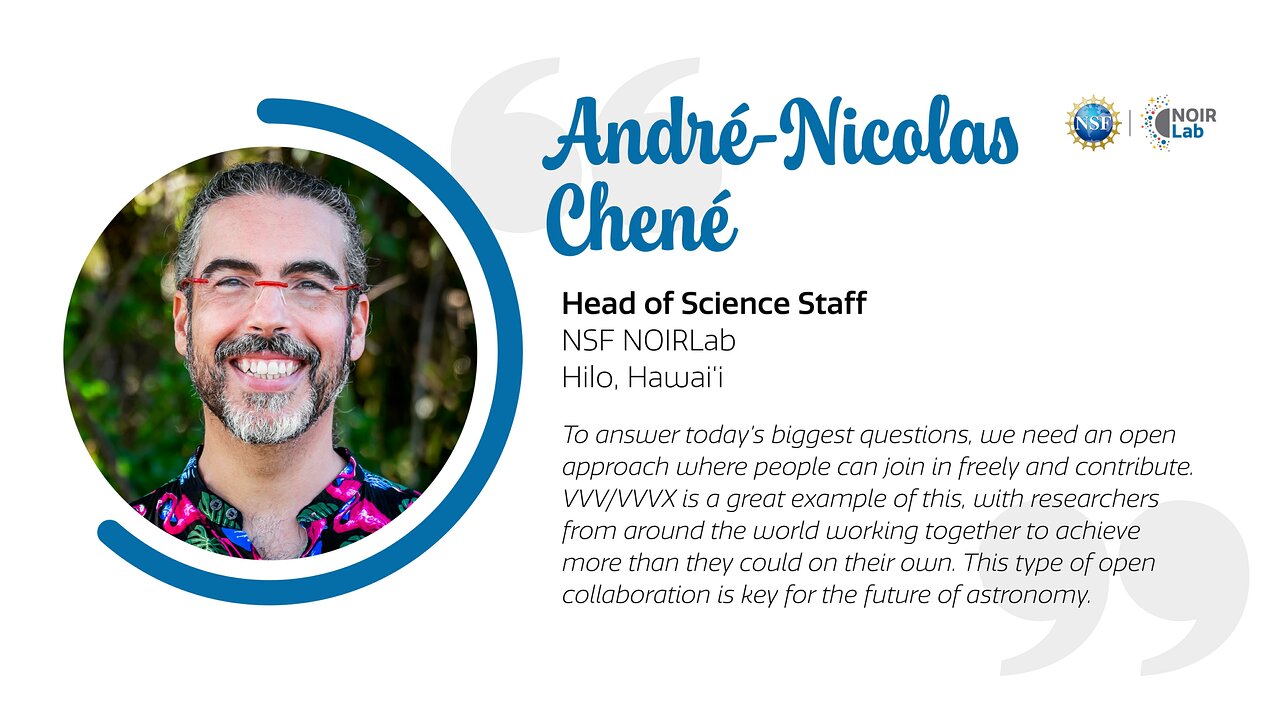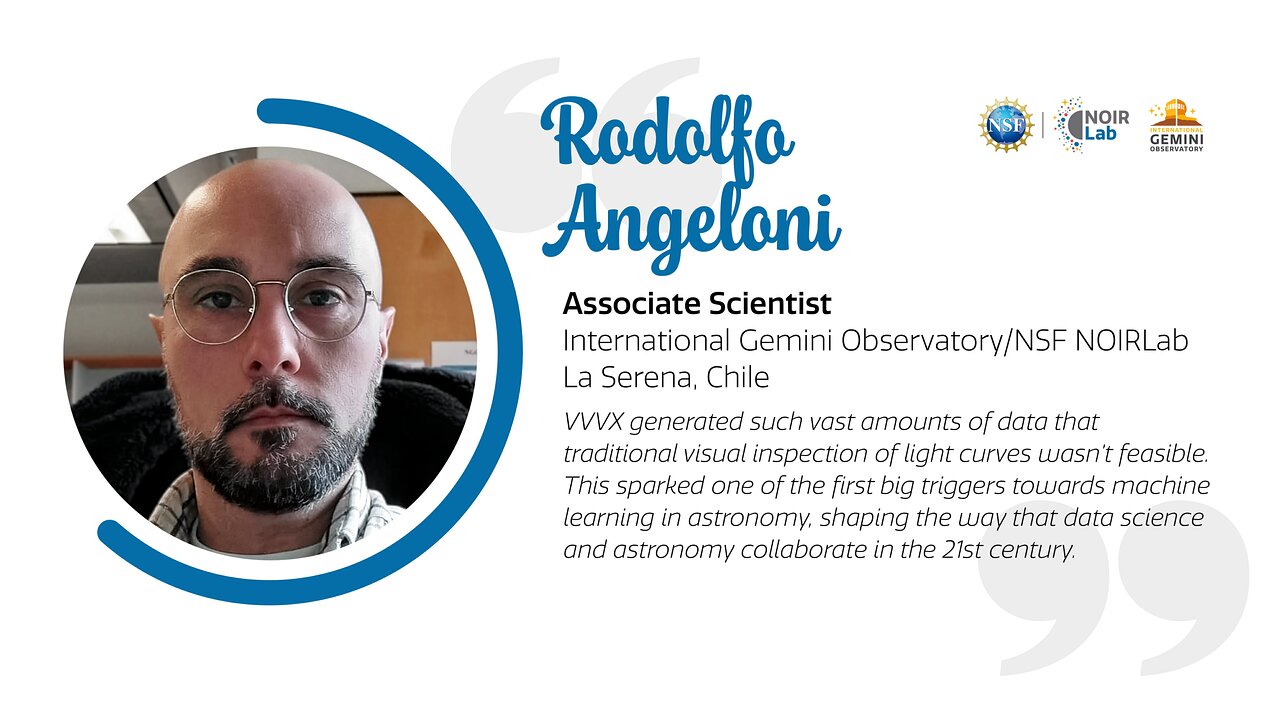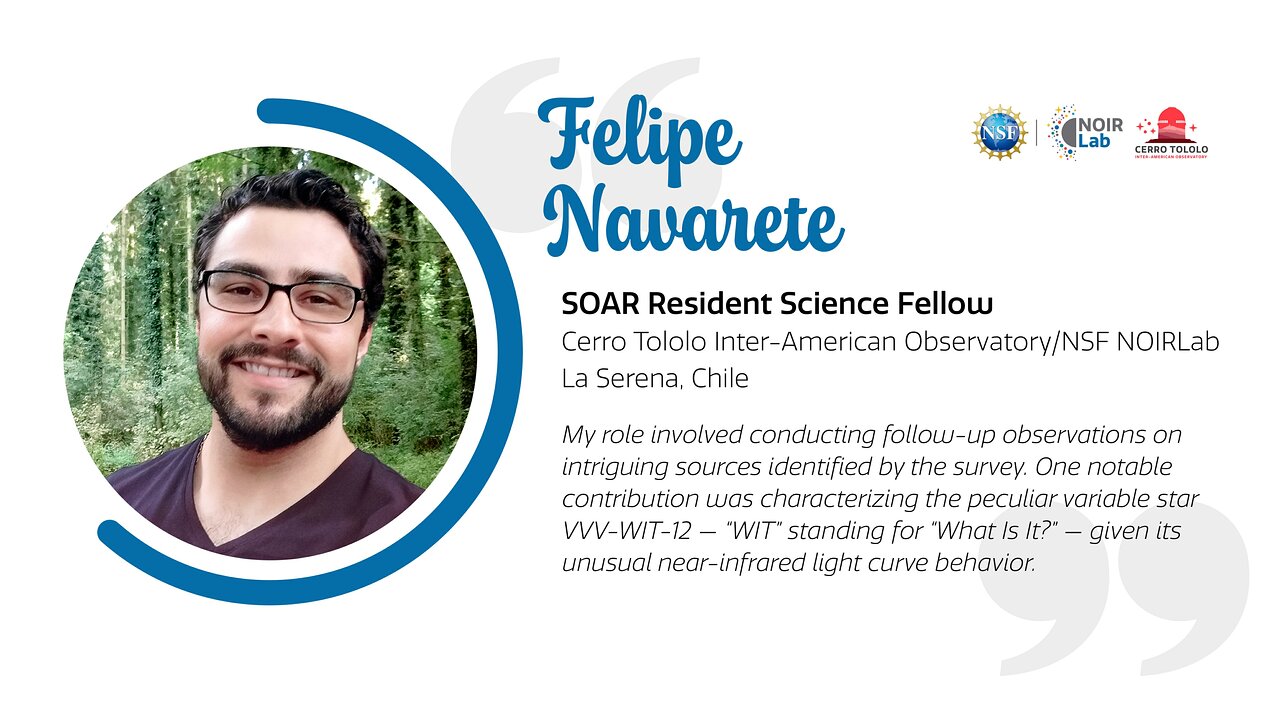
NSF NOIRLab Astronomers and the Vista Variables in the Vía Láctea Survey
How the VVV/VVVX survey impacted five scientists’ careers and inspired a worldwide collaboration in science
Profile
Name: Visible and Infrared Survey Telescope for Astronomy (VISTA)
Location: Cerro Paranal
Optical design: Modified Ritchey-Chrétien Reflector with corrector lenses in camera
Primary mirror diameter: 4.1 meters
Operational waveband: Near-infrared
First light: 11 December 2009
Altitude: 2518 meters
Science goals: Devoted to surveys: variable stars, deep surveys, brown dwarfs, etc.
4 Dec. 2024
The Vista Variables in the Vía Láctea (VVV) survey, and its extension VVVX, spanned 420 nights of observations, culminating in a gigantic infrared map of the Milky Way comprising 200,000 images, capturing 1.5 billion objects, and containing 500 terabytes of data.
The Vista Variables in the Vía Láctea (VVV) survey, and its extension (VVVX), are large-scale astronomical surveys aimed at imaging the Milky Way Galaxy’s bulge and inner southern disk in infrared light. Building on the legacy of ESA’s earlier Gaia mission, these surveys focused on regions of our galaxy that are obscured by dust, making them impossible to observe at optical wavelengths. The infrared capabilities of the VISTA telescope at ESO’s Paranal Observatory in northern Chile allow astronomers to look through dusty regions with the goal of studying stellar populations, star formation, and galaxy structure. The surveys recently reached completion, culminating in the most detailed infrared map ever of our Milky Way.
Five NSF NOIRLab astronomers, funded by the U.S. National Science Foundation (NSF), participated in these surveys, and the work done was transformative for their careers. Their involvement in this large collaborative project allowed them to develop new skills, expand their networks of fellow scientists, and land prominent roles in their fields of research. In this NOIRLab Stories Blog, our stellar scientists share their stories.
Verónica was drawn to the Vista project in 2013 by the opportunity to study massive stars by characterizing young star clusters during her postdoctoral research at the University of La Serena, Chile. In her role, Verónica contributed to the creation of a catalog of 493 new star cluster candidates discovered by Rodolfo Barbá and collaborators. These candidates formed one of the first major catalogs to result from the survey and the work led to a paper titled Hundreds of New Cluster Candidates in the VISTA Variables in the Vía Láctea Survey DR1. She also helped to produce an extinction map of the southern Galactic disk that characterizes how light is absorbed and scattered by the dust and gas present in that region.
Karla’s research focuses on star-forming regions, exoplanets, open star clusters, and optical and infrared astronomy. She joined the VVV survey during her first postdoc at Pontificia Universidad Católica de Chile, where she focused on discovering faint objects like brown dwarfs and free-floating planets. Having already used infrared data from the VISTA telescope for her PhD at the Instituto de Astrofísica de Canarias (IAC), working with the VVV data felt natural. She led a project studying low-mass stars in open clusters, using new methods to reveal around 60 open clusters that have different shapes than previously thought. This work helped her secure her role at NOIRLab by building her resume and allowing her to maintain an active observational profile. Now, as an observer at NSF–DOE Vera C. Rubin Observatory, which is jointly operated by NSF NOIRLab and SLAC National Accelerator Laboratory, she focuses on the technical aspects of data acquisition.
André-Nicolas’s research focuses on massive stars and star clusters in the Milky Way. Following his PhD at the University of Montreal and postdoc in Victoria, British Columbia, Canada, he joined the VVV project in 2010, as the first data were coming in. For the project he developed tools to analyze stellar brightness and helped discover 150 new star cluster candidates in the Milky Way, including three new globular cluster candidates. His work revealed that most evolved massive stars appear isolated, raising questions about their formation. The survey not only advanced his research on massive star evolution but also helped him become a more independent scientist, with the collaborative environment fostering new skills critical to his role at NOIRLab. He continues to work with VVVX data, contributing to its ongoing analysis.
Rodolfo earned both his master's and his PhD from the University of Padua, Italy. He joined the VVV survey in 2009 through a fellowship, focusing on the VVV Templates Project aimed at creating high-quality near-infrared light curves for variable stars. As the project evolved into a large international collaboration, his role led to several important publications, including his work on nova-like objects and symbiotic stars, and the discovery of a nova. The project helped him collaborate with scientists worldwide and develop skills working with international teams. Following his work with the survey, he worked as an associate professor at Universidad de La Serena before landing a position at Gemini South, one half of the International Gemini Observatory, funded in part by NSF and operated by NSF NOIRLab. Now in his current role he looks back at his work with the VVV surveys as a crucial step in his professional development.
Felipe’s research focuses on the formation and evolution of massive stars in the Milky Way and nearby galaxies. He completed his undergraduate, master’s and PhD studies at the University of São Paulo in Brazil, focusing on massive star formation using near-infrared observations from NOIRLab telescopes like SOAR, located on Cerro Pachón, and Gemini North. He joined the VVVX project in his role as a resident astronomer at SOAR. His research on massive star formation benefits from these near-infrared observations as he does follow-ups of VVVX discoveries with detailed spectral and observational studies. His involvement in the survey led him to join a related observational project, VVV-RENEW, revisiting key VVV fields with the Víctor M. Blanco 4-meter telescope at Cerro Tololo Inter-American Observatory, a Program of NSF NOIRLab.
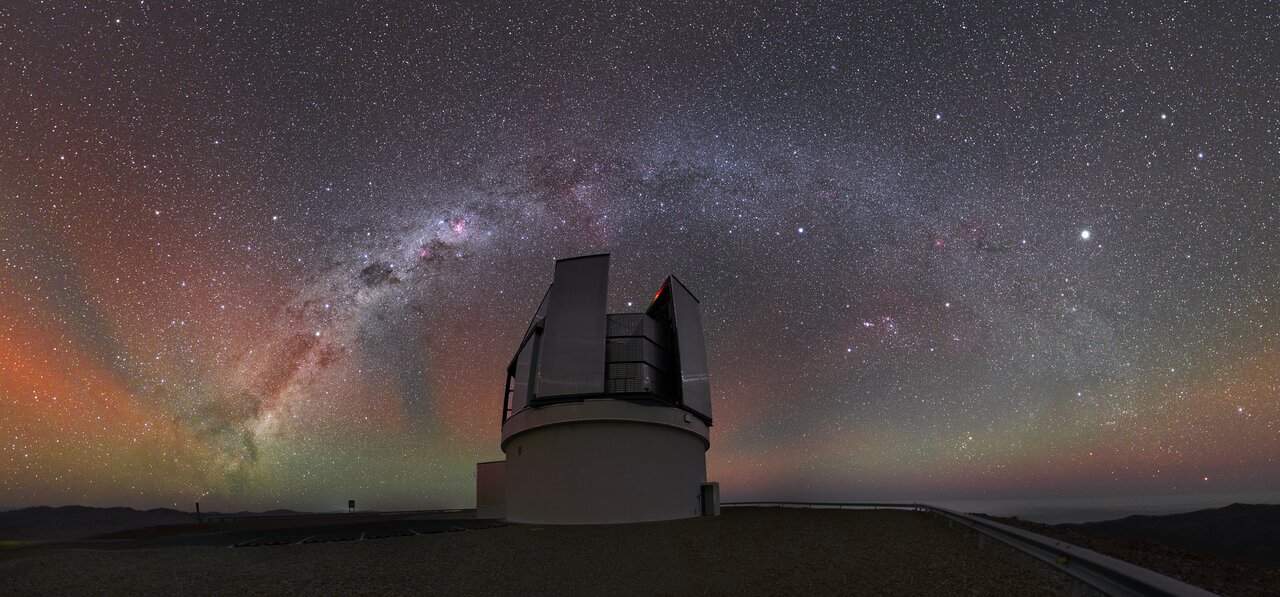
The VVV and VVVX surveys are remarkable examples of international collaboration in astronomy. Born out of a partnership between teams from the UK and Chile, it trained a new generation of astronomers from around the globe, many of whom are now professors and researchers worldwide. Some of our scientists even had to learn a new language during their time on the survey, and they emphasize the importance of foreign language skills in their careers for making cross-cultural connections and building collaborations. Beyond the scientific impact, the survey's legacy will also be measured by the lasting global bonds and a new generation of scientists.
The survey offers not only immediate discoveries but also a rich dataset that will be used by the astronomical community for years to come. With new observatories like Vera C. Rubin Observatory and the Nancy Grace Roman Space Telescope ready to explore our galaxy, these infrared data will be even more valuable and will provide us with a more complete picture of the Milky Way.


